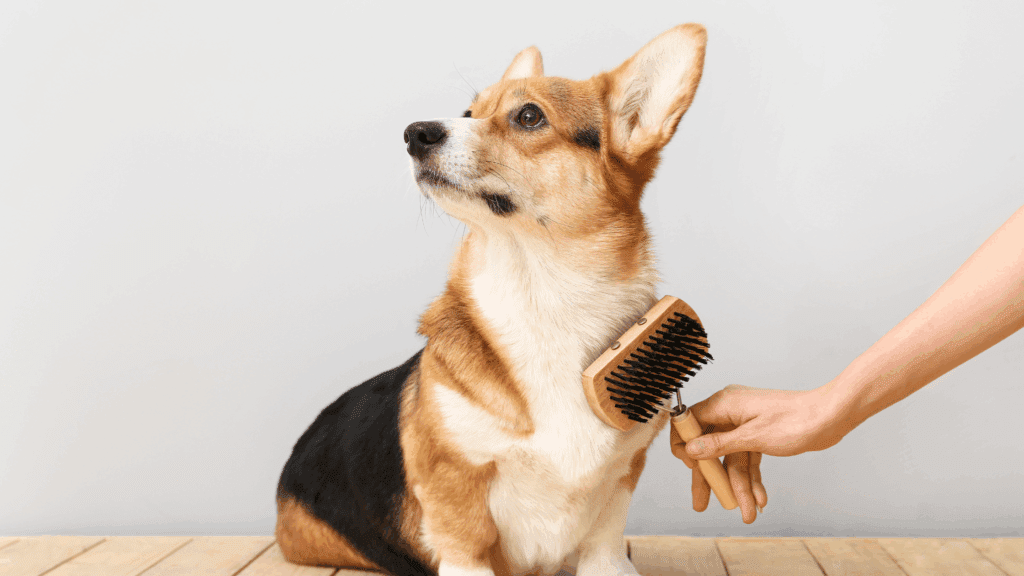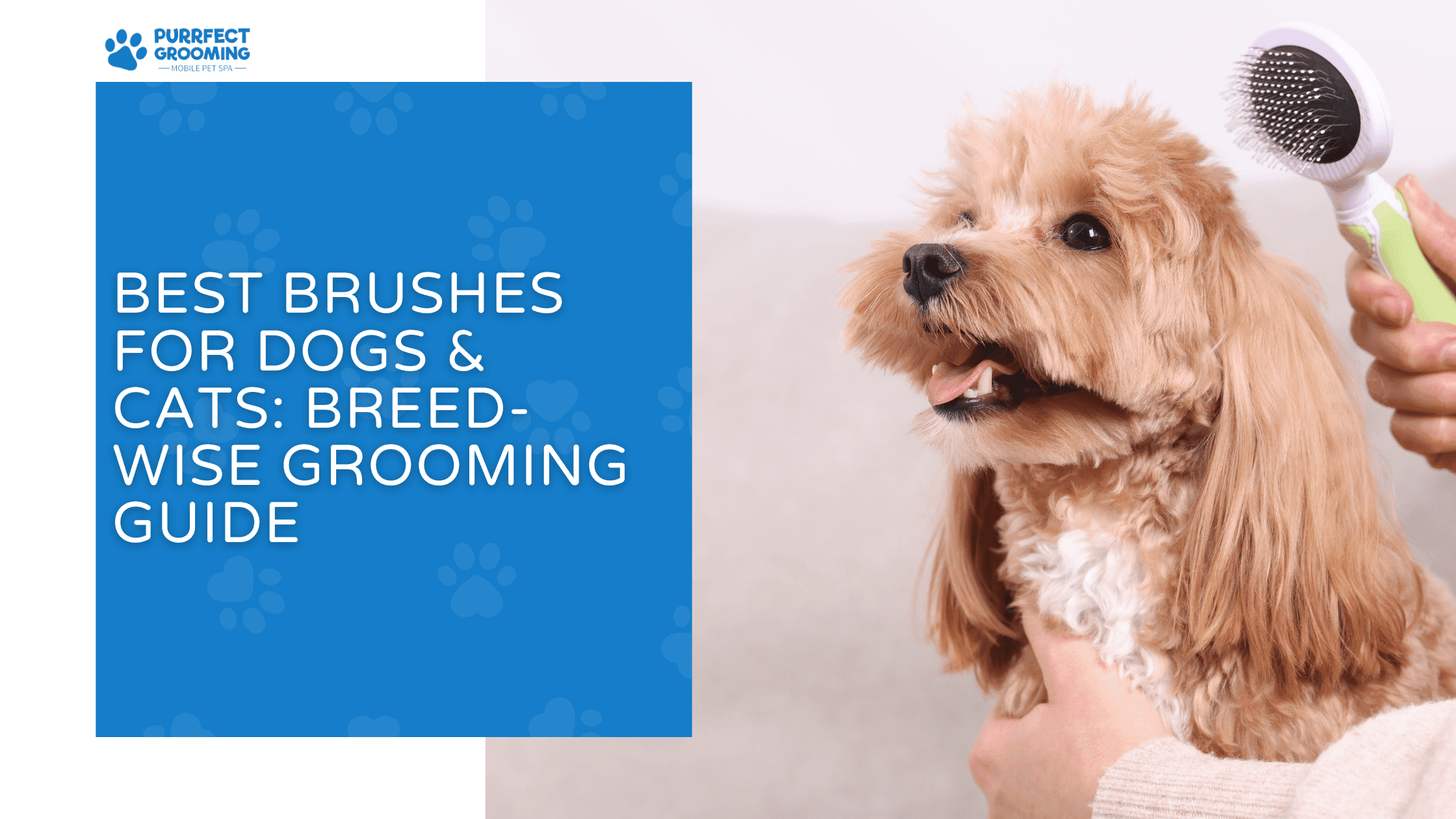Best Brushes for Dogs & Cats: Breed-Wise Grooming Guide
Grooming is more than just a routine task for pet owners, it’s a crucial aspect of maintaining your pet’s health and happiness. Regular grooming can prevent skin issues, reduce shedding, and enhance the bond between you and your furry friend. However, different breeds have distinct grooming needs, and using the right brush can make all the difference.
Choosing the right brush for your pet’s coat can make a real difference in their comfort, appearance, and overall health. Whether you’re caring for a sleek short-haired dog, a fluffy long-haired cat, or anything in between, using the appropriate grooming tool helps reduce shedding, prevent mats, and keep skin healthy. For instance, regular brushing not only removes loose hair and debris but also stimulates circulation and spreads natural oils, contributing to a shiner, healthier coat.In the following guide, we’ll explore the best brushes for different breeds of dogs and cats—so your fur-friend always looks and feels their best.

Understanding Your Pet’s Coat Type
Before diving into the specific brushes for each breed, it’s important to understand the different types of coats and their characteristics. Dogs and cats generally have one of the following coat types:
- Short Hair: Sleek and close to the body, requiring less frequent grooming but still needing attention to stay healthy.
- Medium Hair: Denser and can be prone to tangling and matting, requiring regular grooming.
- Long Hair: Thick and luxurious, demanding frequent and thorough grooming to prevent mats and tangles.
- Curly or Wavy Hair: Unique texture that can easily mat and requires specialized grooming tools.
- Double Coat: Consists of a soft undercoat and a coarser outer coat, common in many breeds.
Best Brushes for Dogs
Short-Haired Breeds
Examples: Beagles, Boxers, Dalmatians, Chihuahuas
Rubber Curry Brush:
- Benefits: Ideal for removing loose fur and stimulating the skin. The soft rubber bristles massage the coat, promoting healthy blood circulation and spreading natural oils.
- Usage: Use in a circular motion to gently remove dead hair and dirt. It’s perfect for bath time to help lather shampoo and remove debris.
Bristle Brush:
- Benefits: Soft bristles help to distribute natural oils, leaving the coat shiny and smooth. It’s gentle enough for short-haired dogs and can be used for a finishing touch after a curry brush.
- Usage: Brush in the direction of hair growth to avoid skin irritation and give the coat a smooth finish.
Medium-Haired Breeds
Examples: Golden Retrievers, Border Collies, Cocker Spaniels, Australian Shepherds
Slicker Brush:
- Benefits: Excellent for detangling and removing loose fur without damaging the coat. The fine, short wires on a flat surface can penetrate deep into the coat.
- Usage: Gently brush in the direction of hair growth. Be careful not to press too hard to avoid scratching the skin.
Undercoat Rake:
- Benefits: Essential for breeds with a dense undercoat. It helps to remove loose hair from the underlayer, preventing mats and reducing shedding.
- Usage: Use with gentle, short strokes. Start at the base of the coat and work your way up to avoid pulling on the skin.
Long-Haired Breeds
Examples: Shih Tzus, Afghan Hounds, Yorkshire Terriers, Maltese
Pin Brush:
- Benefits: Designed to glide through long hair, removing tangles and loose fur. The rounded pins are gentle on the skin and effective at penetrating the coat.
- Usage: Start brushing at the ends of the hair and work your way up towards the skin to avoid pulling and discomfort.
Mat Splitter:
- Benefits: Specifically designed to break up mats and tangles without cutting the hair. It can help maintain a smooth, mat-free coat.
- Usage: Use carefully on stubborn mats. Place the splitter at the base of the mat and gently work your way through.
Comb:
- Benefits: Helps to remove tangles and smooth out the coat after brushing. Metal combs with wide and narrow teeth can be very effective.
- Usage: Comb through the coat to detect any remaining tangles. This tool is also great for finishing touches and ensuring a neat appearance.
Curly or Wavy-Haired Breeds
Examples: Poodles, Bichon Frises, Portuguese Water Dogs
Slicker Brush:
- Benefits: Helps to detangle and remove loose hair without damaging the curls. It’s effective for preventing mats and maintaining the coat’s texture.
- Usage: Brush in sections, working from the skin outward to avoid pulling on the curls.
Metal Comb:
- Benefits: Excellent for finding and removing tangles and mats in curly or wavy coats. It helps to keep the curls defined and mat-free.
- Usage: Comb through the coat to detect any tangles. Use the wide-tooth end first, then the fine-tooth end for finishing.
Double-Coated Breeds
Examples: Huskies, German Shepherds, Akitas, Pomeranians
Undercoat Rake:
- Benefits: Vital for removing loose fur from the dense undercoat, reducing shedding and preventing mats.
- Usage: Use with gentle strokes, starting at the base of the coat. Be consistent, especially during shedding season.
Deshedding Tool:
- Benefits: Designed to reach through the topcoat and safely remove loose undercoat hair. It helps to control shedding and keep the coat healthy.
- Usage: Use regularly to manage shedding, particularly during the change of seasons.
Best Brushes for Cats
Short-Haired Cats
Examples: American Shorthair, British Shorthair, Siamese, Bengal
Bristle Brush:
- Benefits: Gentle bristles are perfect for short-haired cats, helping to remove loose fur and keep the coat smooth.
- Usage: Brush in the direction of hair growth to avoid skin irritation and maintain a sleek appearance.
Rubber Grooming Brush:
- Benefits: Excellent for massaging the skin and removing loose fur. The rubber bristles are gentle and can stimulate natural oil production.
- Usage: Use in a circular motion to gently remove fur and dirt. This brush is also great for bath time.
Grooming Gloves:
- Benefits: These gloves allow you to pet your cat while removing loose fur. They are less intimidating for cats who are not fond of brushes.
- Usage: Simply stroke your cat with the gloves on, mimicking petting motions to remove loose fur.
Medium to Long-Haired Cats
Examples: Maine Coon, Persian, Ragdoll, Norwegian Forest Cat
Slicker Brush:
- Benefits: Ideal for removing loose fur and detangling the coat. The fine wires can reach deep into the coat to remove loose hair and prevent mats.
- Usage: Brush gently in the direction of hair growth. Be cautious around sensitive areas like the belly and armpits.
Wide-Tooth Comb:
- Benefits: Helps to remove tangles and mats without pulling on the hair. The wide teeth are ideal for working through thick fur.
- Usage: Start at the ends of the hair and work your way up to avoid pulling and discomfort.
Deshedding Tool:
- Benefits: Essential for removing loose hair from the undercoat, reducing shedding, and preventing mats.
- Usage: Use gently to avoid damaging the coat or irritating the skin. It’s particularly useful during shedding seasons.
Additional Tips for Grooming
- Establish a Routine: Regular grooming is key to maintaining a healthy coat and skin. Depending on your pet’s coat type, this could range from daily to weekly sessions.
- Gentle Handling: Always be gentle when brushing, especially around sensitive areas. Use smooth, calm motions to avoid causing stress or discomfort.
- Positive Reinforcement: Make grooming a positive experience by rewarding your pet with treats and praise. This helps them associate grooming with positive feelings.
- Check for Problems: While grooming, check for any signs of skin issues, parasites, or unusual lumps and bumps. Early detection can prevent health problems.
- Seek Professional Help: If you encounter severe mats or are unsure about how to groom your pet properly, consider seeking help from a professional groomer.
The Benefits of Professional Grooming Services
For pet owners who want the best for their furry friends but lack the time or expertise to groom them properly, professional grooming services are a lifesaver. Professional groomers have the knowledge and tools to handle all breeds and coat types, ensuring your pet receives top-notch care.
For those in South Florida, PURRFECT GROOMING offers exceptional mobile grooming services for both dogs and cats. Our professional groomers are trained to handle all breeds and coat types, ensuring your pet receives the best care possible. We come to you, providing convenience and comfort for both you and your pet.
Conclusion
Choosing the right brush for your pet’s breed and coat type is essential for effective grooming. By using the appropriate tools and techniques, you can keep your furry friend looking and feeling their best. Regular grooming not only enhances their appearance but also contributes to their overall health and happiness. Whether you’re a dog or cat owner, understanding the specific grooming needs of your pet and using the right brushes will make the grooming process smoother and more enjoyable for both you and your beloved companion. Happy grooming!
You May Also Like : Must Have Tools for Dog Groomers
FAQs
1. How often should I brush my dog or cat?
Short-haired pets: Once a week.
Medium-haired pets: 2-3 times a week.
Long-haired pets: Daily or every other day.
2. What brush is best for short-haired pets?
Rubber curry brushes and bristle brushes are ideal for removing loose fur and keeping the coat smooth.
3. How can I prevent mats in my pet’s fur?
Regular brushing, using the right tools for your pet’s coat type, and focusing on areas prone to matting, like behind the ears and under the legs.
4. What should I do if my pet is afraid of grooming?
Start slowly, use gentle strokes, offer treats and praise, and consider short, positive grooming sessions to build comfort.
5. When should I seek professional grooming help?
If your pet has severe mats, skin issues, or if you are unsure about how to groom them properly, consult a professional groomer.
